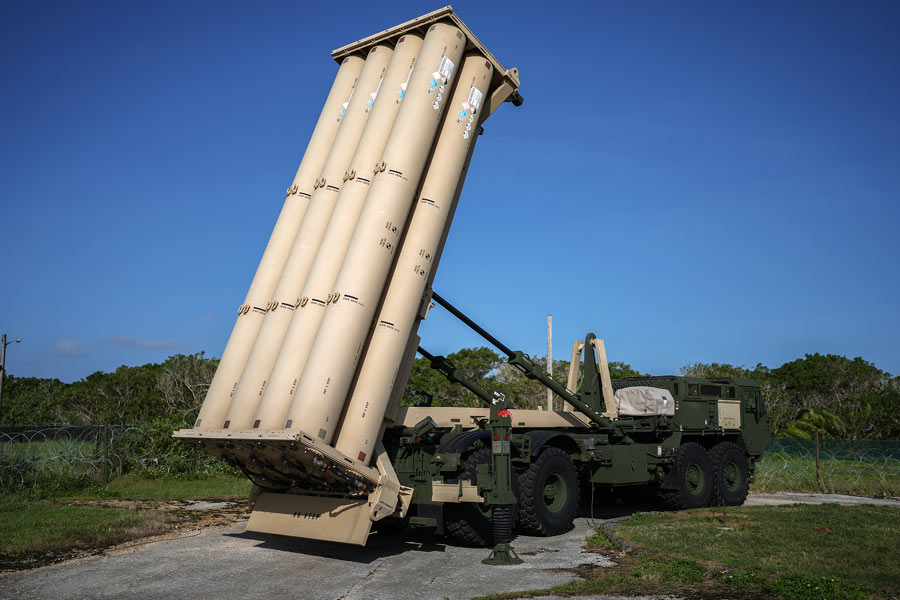The United States is sending an advanced missile defense system to Israel, along with about 100 U.S. troops to operate it, the Pentagon announced Sunday. It is the first deployment of U.S. forces to Israel since the Hamas-led attacks there on Oct. 7, 2023.
President Joe Biden directed Defense Secretary Lloyd Austin to deploy the Terminal High Altitude Area Defense system, or THAAD, and its crew, Maj. Gen. Patrick Ryder, the Pentagon press secretary, said in a statement Sunday.
The move will put U.S. troops operating the ground-based interceptor, which is designed to defend against ballistic missiles, closer to the widening war in the Middle East. It comes after Iran launched about 200 missiles at Israel on Oct. 1 and as Israel plans its retaliatory attack.
The THAAD battery, a mobile defense system, will give the Israeli military another layer of protection to defend cities, troops and installations from short- and intermediate-range ballistic missiles like those deployed by Iran in its last attack.
When asked about it on Sunday, Biden said only that he had ordered the Pentagon to deploy the system “to defend Israel.” Ryder said in his statement that the battery would “augment Israel’s integrated air defense system.”
“This action underscores the United States’ ironclad commitment to the defense of Israel, and to defend Americans in Israel, from any further ballistic missile attacks by Iran,” the statement said. “It is part of the broader adjustments the U.S. military has made in recent months to support the defense of Israel and protect Americans from attacks by Iran and Iranian-aligned militias.”
A senior U.S. military official said Sunday that it would take at least a week to get the new system, and the necessary troops, to Israel.
While the THAAD system represents the first U.S. troop deployment to Israel since the war in the Gaza Strip began, the U.S. military did build a temporary pier off the coast of Gaza in May meant to rush humanitarian aid to the enclave. The pier was dismantled in July after weeks of damage from rough seas.
And late last month, the Pentagon said that it would send a “few thousand” U.S. troops to the Middle East as Israel intensified its attacks on Hezbollah in Lebanon, with one official putting the figure between 2,000 and 3,000. The United States also sent a THAAD battery along with other air defense systems to the region weeks after the attacks on Oct. 7, 2023.
The decision announced Sunday comes as senior Pentagon officials have been debating whether the increased U.S. military presence in the region is containing the war, as they had hoped, or inflaming it.
Several Pentagon officials have expressed concern in recent weeks that Israel has been waging an increasingly aggressive campaign against the Lebanese militia Hezbollah, Iran’s most powerful proxy, knowing that an armada of U.S. warships and dozens of attack planes stand ready to help blunt any Iranian response.
Gen. Charles Brown, the chair of the Joint Chiefs of Staff, has raised the issue in meetings at the Pentagon and at the White House, officials said. Brown has also questioned the effect of the expanded American presence in the region on overall combat “readiness,” the ability of the U.S. military to respond quickly to conflicts, including with China and Russia.
Brown, Austin and other officials have tried to balance containing the conflict and emboldening Israel, one senior U.S. military official said.
On Saturday Austin spoke with Yoav Gallant, the Israeli defense minister, and “expressed his deep concern about reports that Israeli forces fired on U.N. peacekeeping positions in Lebanon as well as by the reported death of two Lebanese soldiers,” the Pentagon said in a statement about the call.
On Sunday morning, the Israeli military said that its jets had hit around 200 Hezbollah targets in Lebanon over the past day.
The New York Times News Service










